A Hard Look at Recycled Plastic for the Home
http://www.decor-ideas.org 07/21/2013 19:30 Decor Ideas
Plastic has its fair share of health and production concerns, and low recycling rates, due to the complexity of sorting, consumer confusion and pure economics. But it's hard to escape plastic completely. Considering alternative materials, recycling responsibly and reusing as much as possible tends to be the best way to deal with this material monster.
While many would argue that it's hardly a sound ecofriendly option, recycled plastic is a highly durable material with a range of uses that does — in some small way — reduce the amount of plastic going into landfills.
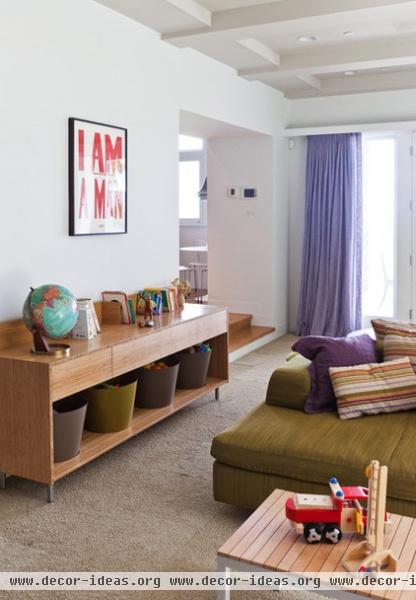
The Basics
Compared with other materials such as glass and metal, plastic polymers require much more processing during recycling. The composition of various plastics differs significantly. When heated, they can split like oil and water, so everything needs to be sorted according to almost identical chemical compositions.
If recycling plastic is such a pain, why bother? According to a study by Columbia University, it's estimated that in 2008, 33.6 million tons of postconsumer plastic waste was generated in the United States. Of that only 6.5 percent was recycled and 7.7 percent was burned for energy. This means that 28.9 million tons of plastic went to landfills.
Also, the plastic recycling process uses up to 66 percent less energy than creating new plastic and releases 250 percent less carbon dioxide.
The recycled plastic Tubtrugs (bins) in this photo offer versatile storage, are highly durable and can be used again and again.
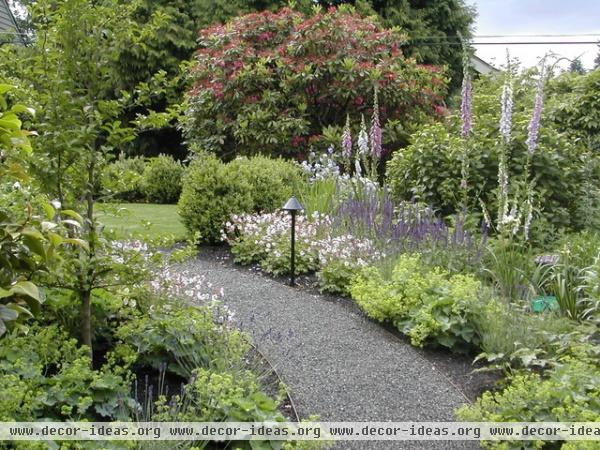
The flexibility of recycled plastic is demonstrated in this garden, where a bender board made from 100 percent recycled plastic creates a border for the curved path.
Pros: Unlike wood, recycled plastic products never rot, encourage mold growth or need paint or toxic preservatives. Recycled plastic has come a long way in design terms. It's highly durable and can be very attractive, often coming in a range of bright colors.
Considerations: Check that your recycled product is recyclable and how best to dispose of it. Also check the percentage of recycled material to be clear on exactly what you are buying and its recommended use. Finally, look at where your recycled product was made to reduce the impact of unnecessary transportation.
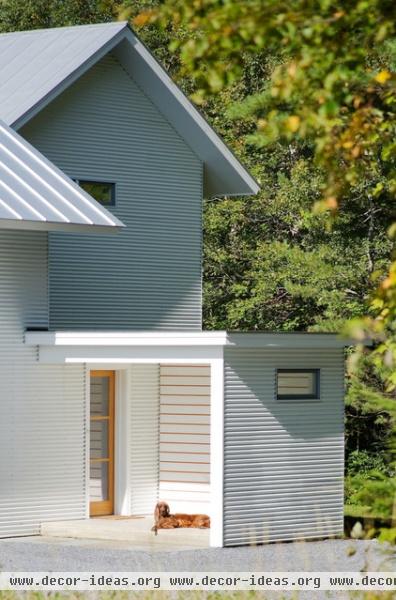
Uses
The most common recycled plastic, HDPE (high-density polyethylene) comes from water pipes and bottles (marked with a number 2 in the recycling symbol). HDPE is commonly downcycled into products like plastic lumber, garden furniture, garden planters, roadside curbs, trash receptacles and exterior trims — such as the one on this contemporary farmhouse in Vermont.
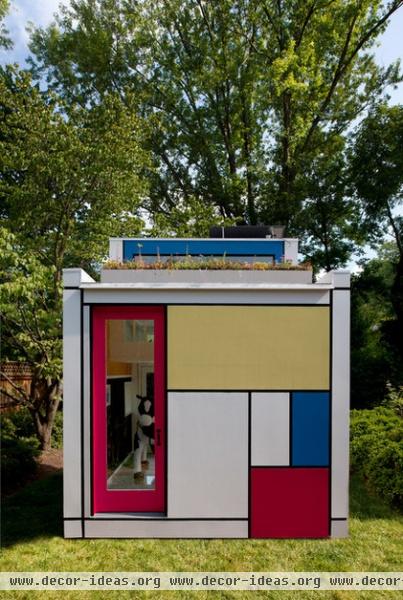
Recycled PVC (polyvinyl chloride) has a significantly better ecological footprint than virgin PVC, using up to 46 percent less energy in its production. Used predominantly in flooring and building materials, PVC is highly durable and has good fire resistance.
This cheerful Piet Mondrian–inspired playhouse is clad in Azek panels made entirely out of recycled PVC.
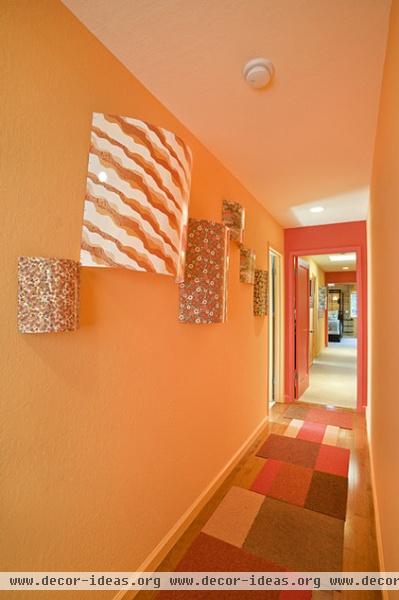
Soft drink and water bottles will normally display the PET (polyethylene terephthalate) triangle mark (or number 1 in the recycling mark) on each bottle. Since it's made from the same composite as polyester, PET can be recycled to produce fibers for textiles. For example, the carpet fiber in this hall rug was made from recycled plastic bottles.
PET fiber is similar to nylon in terms of durability and resistance to wear, and has the moisture protection, stain resistance and color stay of olefin.
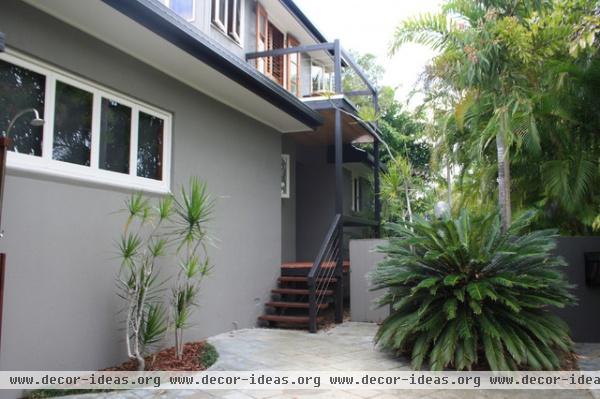
The decking on the front door of this Australian beach house is made of a composite of recycled plastic milk bottles and wood fiber.
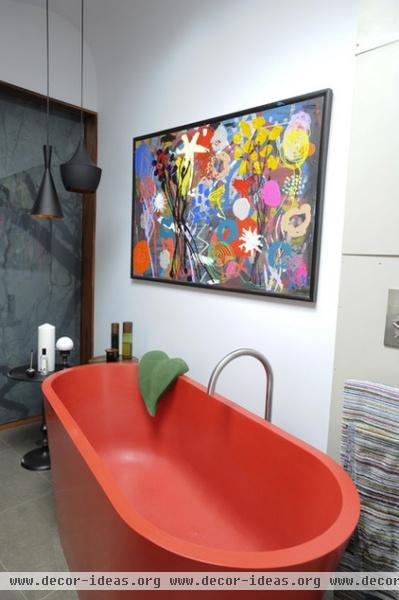
The gorgeous bathtub in this London home, made by Durat, was made of 30 percent postindustrial waste from Sweden and Finland.
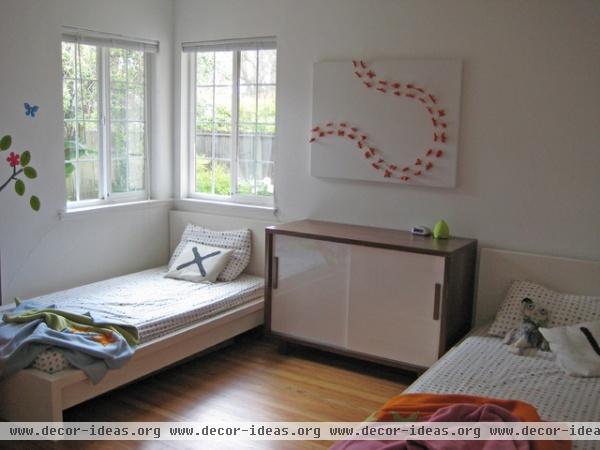
Of course, reuse is the easiest and most affordable ecofriendly option. If you can find a way to give an old plastic item a new home or new life, go for it! This adorable piece of art puts old kids' toys to good use.
Related Articles Recommended












